 Neurolinguistic Programming, or NLP, is an approach to personal development which can help create a feeling of confidence, relaxation and focus on demand. NLP techniques were made popular by Tony Robbins, who had amazing results helping people from all different backgrounds change the way they think and create more successful lives, in a surprisingly short amount of time. But recently, NLP is being used by an increasing number golfers (of all levels) and it’s proving to be a very powerful mental game of golf technique. The basic premise of NLP is that your past experiences, which are stored in your subconscious mind, control a lot of your behaviour. For example, think of a time on the golf course when you’ve been faced with a shot over water or a greenside bunker. I’m sure one of the emotions you feel is fear. But why? It’s probably because your past experience of that particular shot was one that ended up in the water or bunker. So now, that memory is stored in your subconscious so you automatically recall that same feeling of fear when faced with a similar shot. So if the sight of the water produces a negative feeling (fear), what if we could introduce something that we have a positive association with to trigger a feeling of confidence and relaxation instead? This is what NLP is all about. It’s about associating past experience of confidence with a certain stimuli called “anchors” or “triggers”, so that feeling can be recreated on-demand. A well-known example of this is the experiments done by Pavlov on dogs. In these experiments, a bell, which was an auditory “anchor”, was sounded every time the dogs were fed. This was repeated many times over and eventually, the sound of the bell caused the dogs to salivate, without the presence of any food. In other words, the sound of the bell became a positive association for the dogs (eating) which triggered a behavior (salivation). So how do we anchor those times when we’ve felt confident and successful and use them to trigger that same feeling?  The Global NLP Institute defines anchoring as: “Anchoring is a process where a specific stimulus (cue, trigger) is connected to a memory recall, state or state change, or another response. Anchoring occurs naturally all the time. You likely have several powerful anchors in place; a certain smell may remind you of a specific person (perfume, etc). Each time you see something, it can bring you back to the state or a past memory (a photograph, a living room etc.). The same occurs when you hear a certain sound or piece of music.” What I’m about to show you is how to “anchor” great shots you’ve hit, and use it to trigger confidence on the golf course. There is no one anchor that works for everyone. E.g. some people can recall an experience better with smell (e.g. perfume), some with sound (e.g. music) and some with a verbal “key word”. The trick is find what works for you. Here’s how an example of how to use anchors and improve your mental game:
Try reinforcing this several times and introduce that that trigger into your pre-shot routine on the golf course. 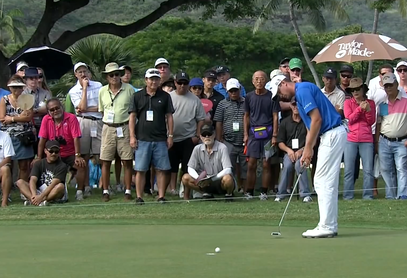 Here’s another example of it in practice: When you’re practicing your putting, “anchor” the feeling of the ball going in with a single word. Words that I like (but pick whatever you want) are “beautiful” or “gorgeous”. Reinforce it by doing it several times, each time the ball goes in. Then, during your pre-putt routine on the course, right before you take the putter back, say that word in your head and it should evoke that same feeling of confidence. Another time, you could experiment with sound and see if that works better. E.g. try holding onto the sound the ball makes when it goes in the hole, and recreate that in your pre-putt routine. For a touch anchor, you could try tugging your shirt like Freddie Couples, clicking your fingers twice, or touching the knuckle on your left hand. Give these a try and find the type of anchor that works for you. I’m confident you’ll find this will equip you with a confidence booster and relaxation technique, especially in pressure situations. David MacKenzie www.golfstateofmind.com 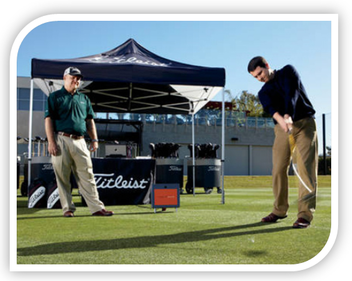 2. WHAT TO LOOK FOR IN A FITTER You have already heard me say "a good fitter should...." a couple of times. That is because it is so critical to get good advice about your equipment. If you have been fitted in a net, indoors, without a launch monitor, and the fitter didn't ask you many questions about your ball flight goals, the chances are you have wasted your time, and more importantly, a lot of money. There are plenty of guys out there just fitting to help turn over their golf store inventory. Some of the things to look for when you look to make an appointment are: a) Does your fitter have a launch monitor? Technology such as TrackMan (especially), FlightScope Launch Monitors and others really help the fitter validate what he sees in your ball flight. It helps him record information and show you the data, compared to the "desired" ball flight goal. If your fitter has invested in technology, then he is serious about the business you are giving him. b) Does your fitter have a good fitting cart with a variety of heads and shafts to try? c) Does your fitter have specific fitting qualifications and experience? Most good manufacturers will invest in training good professionals who are committed to fitting, and give them official certification. 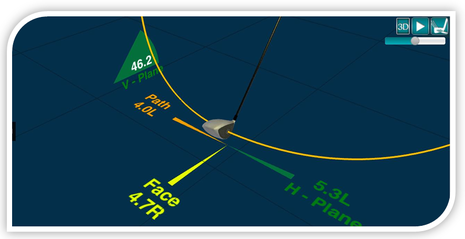 Not all good fitters are PGA-qualified professionals, whether they are or not is not as important as knowing that your fitter understands ball flight cause and effect really well; this is an undeniable advantage in fitting. d) Golf balls/ Driving Range: If your fitter using "floaters" on a driving range with water, for example, it can make it difficult to get consistent data to analyze. Those balls are very light and do not compare to say a ProV1 in performance. Apples and oranges! A good range with a grass tee is also very helpful, so you can see what wind does to a ball flight, or how a club interacts with the turf. A mat is not ideal when judging how a club performs through the turf which is a very important part of how fairway metals/hybrids, irons and wedges will "feel" when you play a golf course. You can't take that mat with you on Saturday morning! e) Time: a really thorough fitting session can take a lot of time, depending on how many factors are involved and which category of equipment you want fitted. I have spent as much as an entire day with a tour player getting wedges dialed in, and as little as 15 minutes. Generally speaking, though, if it is the entire bag you want fitted, two sessions of an hour would be a good benchmark. If the fitting professional wants you to pay for the time, and he's got all of the above to offer, it is probably worth it. 3. MYTHS AND COMMON FITTING MISTAKES There are so many, but here are a few of the common ones we see in almost every session: Driver Shaft Length: The longer the better? Right? Wrong. Most players on the PGA Tour use either 45" or 44.5" shaft lengths. Most amateurs we see (including some very good ones) come along with 45.5" and 46" shafts. They have difficulty hitting the center of the face consistently, lose a lot of ball speed and lose shot control. Lie Angles: "I need a flat lie because I'm short. Right?" Not necessarily. What matters is what happens at impact, how the club performs through the turf, and how the lie angle affects your ball flight (back to those goals again!) Bounce: With wedges in particular, bounce is your friend! Bounce can give you more margin for error with chipping, pitching and bunker play. Most golfers we fit need at least one wedge in their bag with more bounce. Much depends on your pitching technique, and the turf/sand conditions where you play. Your fitter should be asking you questions about it and watching you hit from turf and sand. In general, if you take a sizable divot more bounce can help; a small divot then medium or low bounce can help. There's nothing stopping you having one wedge of each for variety. Many of the best players in the world have high bounce set-ups in their wedges so exploiting bounce does not imply a lack of ability or skill. Standard Specifications: From manufacturer to manufacturer "standard" specifications can vary greatly! There is no standard lie, loft, length, or weight anymore So, please refrain from telling your fitter you use "standard specs." Take your full set along to a fitting session so he can see for himself. Set Composition: It's very important for a fitter to evaluate what is the best set composition for your game. It is critical not to have huge gaps in yardages. Common mistakes are big gaps in the wedge system. More than 6 degrees in a gap is probably too much. Many pitching wedges from sets are now as low as 42 degrees, leaving huge gaps to the traditional sand iron. Also long irons that don't fly a playable trajectory are a common issue. If you haven't tried a hybrid yet you should consider one. Wedge Shafts: Lightweight shafts are designed to help create speed and generally make the ball fly higher. That may suit you in general play but it is very undesirable for your scoring shots from, say, 60 yards in. You are looking for accuracy and trajectory control aren't you? Be careful especially with your sand and lob wedges; they might need to be different to the rest of your set. Golf Ball: Again, it is the only piece of equipment you use on every shot. So many people just use whatever is in their bag or buy "pond balls" which do not suit their game. That is a serious mistake. Ask your fitter what is a suitable golf ball to help you achieve your ball flight goals, and most importantly, gives you control around the greens on scoring shots. Golf Shafts: "Lighter is better”, right?". Not necessarily. Lighter usually means a higher ball flight and less control. If that is what you want to help your game, all right. It is incredibly hard to know what to use when there are just so many options available. But, to help you achieve your ball flight goals (again I mention this) it is crucially important to know and understand what each shaft is designed to do. Your fitter will help break through the confusing clutter.  Loft: "If I use an 8.5 degree it will go further than my 9.5 degree, right?" For most people it will quite likely just go closer to the trees! Not enough loft can result in technical errors like falling back on the trailing foot in the downswing, even amongst the best players. That is where a PGA qualified fitter can help. He will know that. If in doubt, use more loft, and enjoy the fairway, but your fitter can find the ideal loft/ head combination for you. This may vary greatly between model and manufacturer (there is no standard!). Being properly fitted should be easier for you now. It is a fundamental investment in your improvement. You should no longer need to tinker all the time and waste money on the latest fad so tell your spouse it is going to save you money! Now watch your "luck" improve! Great golfing! Anthony Sinclair PGA (Australia)  It doesn't matter if you are a 24 handicapper who just wants to break 90 or a budding Tour Professional; your equipment is the first variable you need ticked off on your list of ways to play better golf. Why should it be the FIRST step? Because it is difficult to improve your ball flight, skills and technique if your equipment is getting in the way. An artist would not begin a painting if the canvas was filthy and his brushes were the wrong size would he? Trying to become a better golfer isn't easy but you have to start with the right tools for you! Other important boxes to tick on your improvement schedule should be getting a proper screening from a TPI (Titleist Performance Institute) qualified professional and also having a PGA qualified professional to help you with your golf course management, mental game and swing technique/short game skills. Your equipment must be tailored to help you achieve your ball flight goals, whether it is to slice the ball less, or lower the trajectory of your irons. If you have been fitted before and the fitter did not ask you what you want to achieve with your ball flight that constitutes considerable failure by him. It is like a doctor cutting you open before asking what is wrong! Most equipment is designed to help a player achieve a certain ball flight, but it varies greatly. There are literally thousands of models and designs from which to choose.  This applies not just to clubs; balls are an important part of a good player’s armory, and the only piece of equipment you use on every shot. The importance of your golf ball should not be underestimated. It is incredible how much equipment has improved in the last 20 years, yet the average handicap has not come down. There is a lot of misinformation out there, and most players we see really don't understand their own equipment well enough, and that includes many people playing the game for a living! I hope this 2 part article helps you to break through the confusion and get you onto a path to "ticking the boxes" when it comes to the equipment you use to play our wonderful game. I'm going to break down this article into three sections: 1. What properly fitted equipment should do for you. (part 1.) 2. What to look for in a fitting professional. (part 2.) 3. Fitting myths and common fitting mistakes we see every day. (part 2.) 1. WHAT PROPERLY FITTED EQUIPMENT SHOULD DO FOR YOU a) Properly fitted equipment should help you achieve more solid, centered contact on the club-face. Clubs that are the wrong length, especially, can cause poor contact, and severe loss of ball speed. Centered contact will help maximize ball speed and distance (I know you want some of that)! Club-head design can also cause impact-related problems, such as lie angle, bounce angles, weight and even grip size. b) Properly fitted equipment should help you achieve a desired trajectory. It's no good buying "super game improvement" irons with a low center of gravity to help the ball fly higher for example, if your ball flight goal is to lower your ball flight.  Selecting a model of golf club and ball to help your launch conditions (spin rate, launch angle, ball speed) is critical. Again, a good fitter should know what you are trying to improve or achieve with your trajectory, and recommend suitable products. For example, if your goal is to stop pushing or slicing the ball, then perhaps an offset model can help, because it makes it easier to square the club-face and start the ball online. The ideal launch conditions will help you maximize distance. c) Properly fitted equipment should help you achieve better accuracy. Great players who make a living from the game are highly concerned with their shot dispersion and ensuring their clubs are helping them be as accurate as they can be. Are you concerned about your accuracy? Or are you obsessed with distance? Distance is advantageous, but it can come at the expense of accuracy and control. If you really want to improve, and score better, a good combination of both accuracy and distance is essential. Next week we'll continue with part 2 where I'll cover; 1. What to Look For in a Fitter 2. Myths and Common Fitting Mistakes See you next week. Anthony Sinclair P.G.A. (Australia) Following on from last week's article where I discussed the first four letters in the D.E.S.T.I.N.Y. acrostic, here's the final three letters and the lessons to study and apply to your golf practice routines to help you have your best year ever in golf. 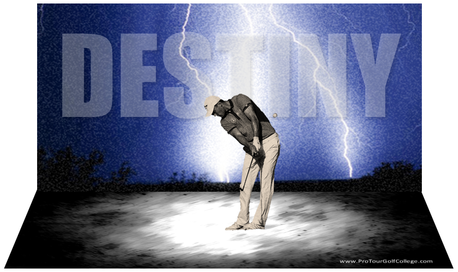 INTENSIFY YOUR PRACTICE TO PREPARE FOR THE PRESSURE My dictionary defines intensity as "a high degree of emotional excitement and great energy, strength and concentration." But we're not aiming just for intensity as it is described in the dictionary, we're aiming for an optimal state of intensity to pressure-proof our golf game. Optimal intensity is the ideal level of mental focus that you apply to hitting golf shots that helps you to perform your best on the golf course in tournaments. After all, is there any other reason to practice? When you think about it, you are not just developing skills to function correctly, you should also be developing your nervous system to hit golf shots confidently under pressure. At Pro Tour Golf College we share with our students that the goal of every practice session is to practice in their optimal performance state. This means that they learn to train right on the edge of the current ability because we want them to hit golf shots whilst they are in this ideal state of intensity so they can perform to the best of their ability with every golf stroke they make. Rating Arousal Levels From 1 to 10 We do this by simply rating the state of arousal they are in on a scale from one to ten with two being a low level of arousal, and eight being a high arousal level. We have found that the optimal state of intensity is around six to six and a half out of 10. In other words the level of intensity is around sixty percent of their maximum intensity level. Each golfer will experience these arousal levels differently; however the idea is to hit practice shots with your arousal level slightly higher than half way on the scale. One of the biggest challenges you are faced with when competing in tournaments is getting into an over-aroused emotional state, particularly under pressure, where you would rate as high as a nine on the scale. By developing your awareness of your arousal levels when you practice you can learn how to hit your shots in the optimal zone by teaching your nervous system to continually adapt to the challenges you face so that you can hit pressure shots successfully any-time-any-where. But how do you practice right on the edge of your golfing ability?  Match your skill level to the challenge level to practice in the optimal state Match your skill level to the challenge level to practice in the optimal state NEGOTIATE BETWEEN THE CHALLENGE AND YOUR SKILL LEVEL All golf practice is a negotiation between skill and challenge. The key to effective golf practice design is to practice right on the edge of your ability. To do this you need to understand that you are negotiating carefully between the challenges you set up for yourself when you practice and your current level of skill. The idea is to set up golf practice routines that challenge your golf skills by putting you under increased but manageable pressure. You see you’re attempting to train or condition your central nervous system (CNS) to gradually become more and more accustomed to dealing with increased pressure so that you’re more capable of producing important golf shots when you need to. To effective train your CNS design continually challenging practice routines. These routines are such that they put you and your golf skills under increased pressure so that you learn how to adapt gradually so you can execute your strokes competently under any type of pressure.  Your job is to practice and develop each golf skill to the level of unconscious competence, where you can execute golf skills without thinking about how to. This is the level of performance that you must aim for to hit golf shots confidently and competently when it matters. Every time you practice your golf skills you need to design routines that challenge your golf skill confidence level and take it right to the edge of the stressed out zone. The stressed out zone is the zone where your golf skills do not match the challenge level you have designed for yourself. The stressed out zone is a high mistake zone where you basically cannot pull the shot off you are attempting more than one or two times out of ten, or about 20 percent of the time. This stressed out zone is to be avoided because it can get you into an over aroused (frustrated or angry) state and away from the optimal performance zone. When you practice your golf skills your main objective is to almost match up your golf skill level to the challenge level you design (the negotiation). You do this by designing practice routines where the skill to challenge level success rate is from 40 to 60 percent. This will have you practicing in the optimal performance zone for developing tough golf skills that won’t break down under any type of pressure.  By looking at your year you can allocate time for technical and targeting practice By looking at your year you can allocate time for technical and targeting practice YEARLY PLANNING DRIVES TECHNICAL AND TARGETING PRACTICE The key to ongoing improvement of your golf skills is preparation, and specifically you look at a full year of golf and identifying the important tournaments you want to perform your best in develop a weekly golf plan to carefully manage your practice from week to week throughout the year to play you best when the important tournaments come around. An annual golf development plan is also known as a periodized plan essentially breaks your year down into smaller and more manageable phases of practice leading to an important event on your calendar. Surprisingly many advanced and elite golfers in our experience don’t have or use an annual golf development plan which makes little sense if you’re a serious competitive golfer who wants to continue to get better. It’s definitely worth learning some of the basics of how to design a simple plan that will give you an edge over golfers who don’t know how to plan their year, or don’t want to. We are going to focus on two elements in practice. So begin by dividing your golf skill development into two distinct categories. 1. A technical skill development phase 2. A targeting skill development phase To learn how to design a periodized golf plan here are the links to a detailed set of articles that will enable you to do so. http://www.protourgolfcollege.com/news-blog/how-to-design-your-annual-golf-training-and-performance-success-plan-part-1 http://www.protourgolfcollege.com/news-blog/how-to-design-your-annual-golf-training-and-performance-success-plan-part-2 http://www.protourgolfcollege.com/news-blog/how-to-design-your-annual-golf-training-and-performance-plan-part-3 Technical Skills Development (Practice drills, video analysis, training aids and lots of repetition) Technical skill development in long game and short game begins very early in the year before the main tournaments begin. The idea here is that the golfer and their instructor allocate enough lead time to improve the golfers weaker techniques with the goal of moving them to a level of unconscious competence. Keep in mind that this rarely happens for the majority of elite golfers we've observed because many are making the mistake of still working too much on their techniques by the time their major tournaments come around which means they are not nearly ready to perform at their best. This is very common and a recipe for disaster. You need at least eight to ten weeks of time allocated for technical skill development so you can effective transition from the technique phase into targeting phase. This means that a golfer will be in a technical development phase for all of January and February and half way through March before they transition into a targeting skills phase for the rest of March and all of April in preparation for an important tournament in May. 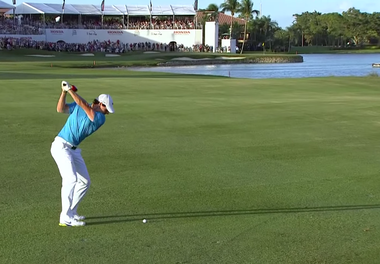 You have to be at the unconscious competence stage to play this shot You have to be at the unconscious competence stage to play this shot Targeting Skills Development (Targets, ball flight control, skill testing, rhythm and tempo) Once you have developed your golf skills through the technical phase you then need to make the transition to where your focus is more on controlling the behavior of the ball flight rather than controlling how you execute the stroke. So you go from a stroke control phase to a ball flight control phase. You are not thinking about how to execute your stroke now; you are hitting shots as accurately as you can to various targets. Golf shot-making in tournaments requires that you develop your ability to where you hit a relatively high percentage of golf shots into the fairways and onto the greens consistently without thinking how to. For example, the targeting performance threshold for a tournament professional is around 60 percent. This means that they must hit a minimum of 60 percent of fairways, or around 8 fairways out of 14, and no less than 60 percent of greens hit in regulation, or around 11 greens out of 18. To achieve a 60 percent standard means that six shots out of ten land inside your chosen target zones. Remember, when you set up your target zones in practice you are negotiating between the size of the targets and matching them to the level of your skill. 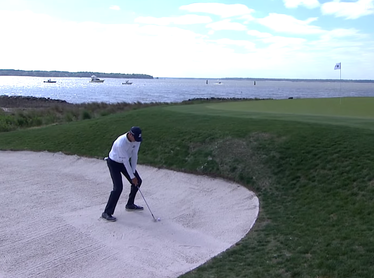 By tournament time you will be confident playing shots around the green By tournament time you will be confident playing shots around the green Around the greens you also need to establish target zones you can hit sets of golf balls into and then measure your results. As an elite golfer (handicap less than 5) the target zone for a chip or pitch shot will ideally have a diameter of 6 feet to challenge you. Study our Handicap / Skill Level to Target Size Matrix below to practice to the target zone size that is based on your current skill or handicap level. The targeting development phase is the golf skill sharpening phase where your refine ball behavior in terms of distance control and accuracy. This approach to developing your golf skills will help you to transfer your practice results into competitive results on the golf course. By now you will have a much better idea of what to incorporate into your golf practice routines to practice with definite purpose. The D.E.S.T.I.N.Y. approach to golf practice improvement will help you to practice with the right level of intensity by skillfully negotiating your skills against the challenges you design for yourself, this will improve your intensity of focus so you extract a lot more out of your practice sessions this year.
We wish you the very best using the D.E.S.T.I.N.Y. approach to golf improvement, and thanks for taking the time to read our articles . Lawrie Montague and David Milne - Pro Tour Golf College The Professional Golf Tour Training College |
Archives
June 2019
|
Proudly Supported By
Copyright © 2011 - 2018 Pro Tour Golf College
Website Managed By Golf Performance Media
All Rights Reserved
Website Managed By Golf Performance Media
All Rights Reserved



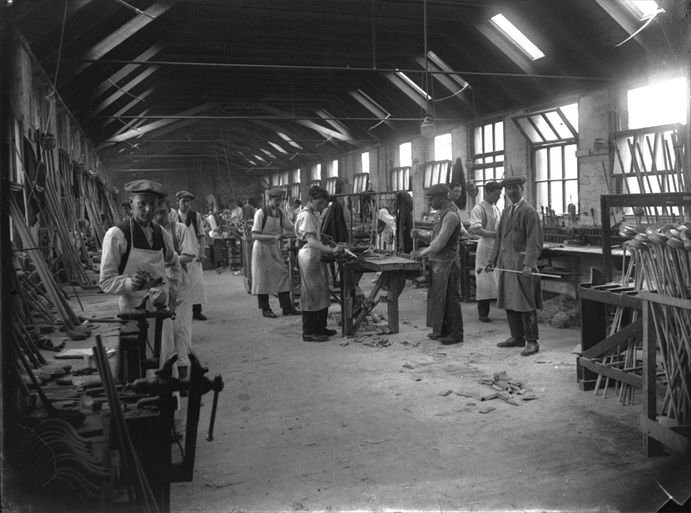


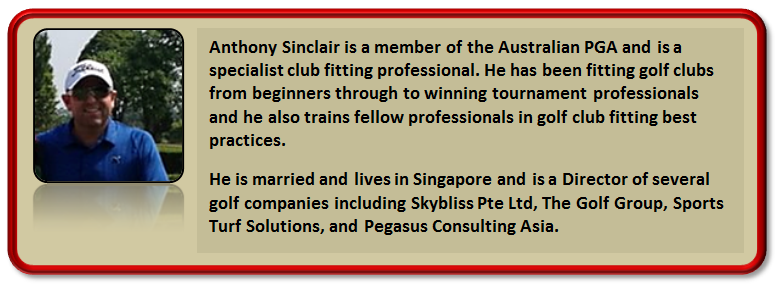
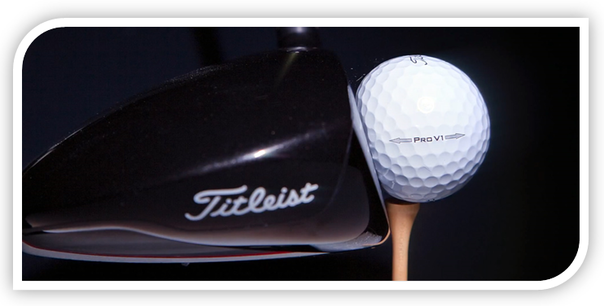


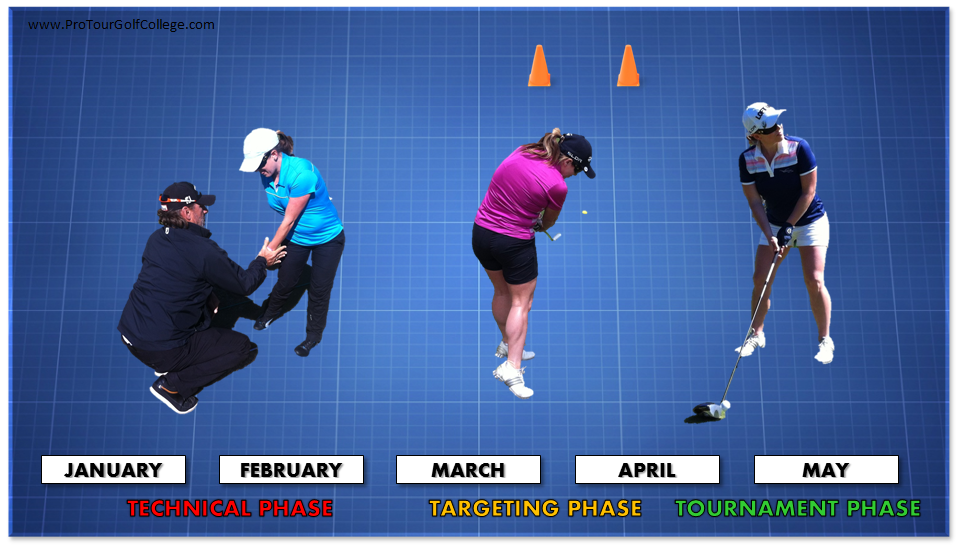


 RSS Feed
RSS Feed



